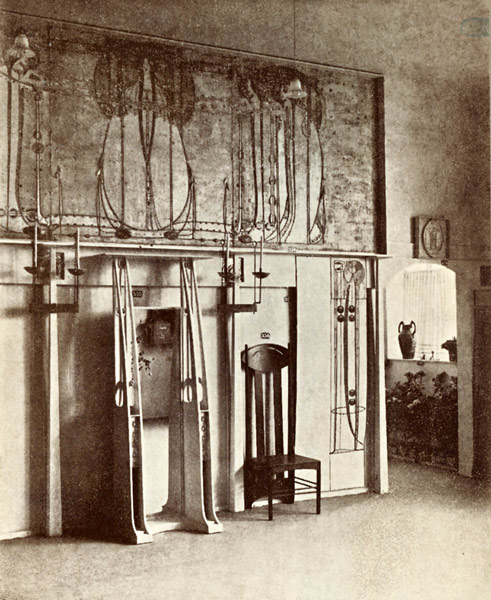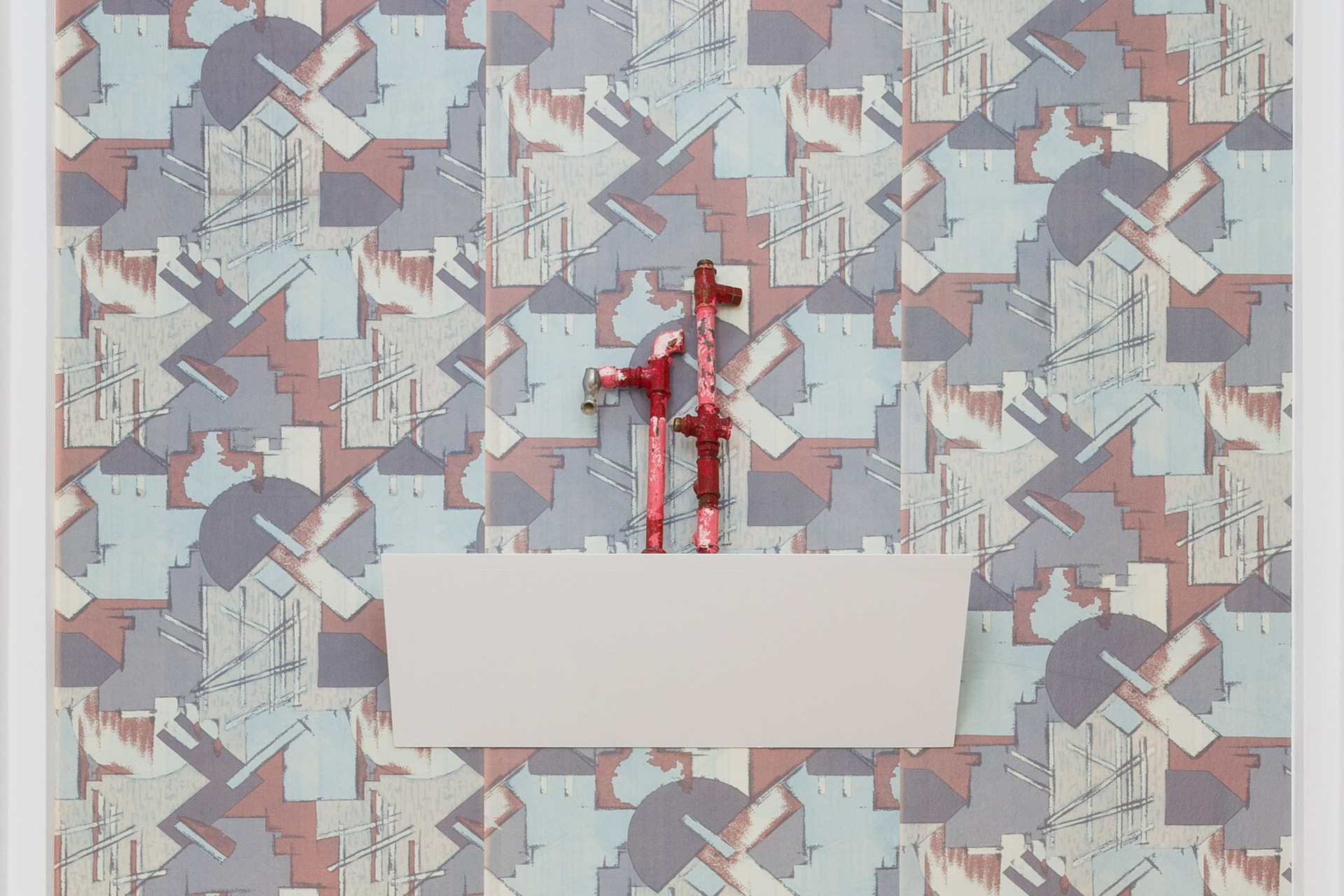

1899, oak, gilded bronze, copper and leather,128 x 268 x 122 cm (Musée d’Orsay, photo: Sailko, CC BY 3.0 ) In the Continental Havana Company building in Berlin he used sinuous curves to integrate the shelving, doorways, alcoves, furniture, and walls into a unified organic whole. Van de Velde worked in many different media, designing buildings, interiors, furniture, and decorative objects as well as posters. A holistic approach Henry van de Velde, Continental Havana Company interior, Berlin, 1899 (demolished) In a poster for the nutritional supplement Tropon, Henry van de Velde explored the decorative and suggestive potential of non-representational forms, using the whiplash line to create an abstract design of organic shapes that suggest both plant-like growth and dancing figures in the rising diagonal of repeated forms.

1900, glass, 17 3/8 x 3 ¾ inches (The Metropolitan Museum of Art, New York) 1900, various woods, 40 x 49 ½ x 12 inches (The Metropolitan Museum of Art, New York) Emile Gallé, Autumn Crocus Vase, c. Luxury design for the masses Emile Gallé, “Ombellifères” Cabinet, c.

Barcelona’s Catalan Modernism, especially Antoní Gaudí‘s architecture and decorative designs, is also closely related to Art Nouveau. In addition to Paris, major centers of the modern fin-de-siècle style included Brussels, Glasgow, Munich (where it was known as Jugendstil or Youth Style), and Vienna (where it was called Secession Style).

Left: Siegfried Bing’s Maison de l’Art Nouveau, Paris (demolished) right: Eugène Gaillard, Bedroom for the Pavillion de l’Art Nouveau Bing, 1900 In addition to marketing individual objects, Bing commissioned artists and designers to create model rooms in his gallery to display Art Nouveau ensembles that included furniture, wallpaper, carpets, and paintings. The term (French for “New Art”) derives from La Maison de L’Art Nouveau, the Paris art gallery run by Siegfried Bing, who was a major promoter of the new style, as well as of Japonisme and the Nabis. Victor Horta, Maison du Peuple, Brussels, 1899 (demolished) An international styleĪrt Nouveau is only one of many names given to this international fin-de-siècle style, which had many regional variations. Iron support structures also made it possible to create curved facades with large windows, which became prominent elements in many Art Nouveau buildings, including Horta’s Maison du Peuple. Cast iron is both stronger and more flexible than traditional wood or stone and allows for much thinner supports, like the slender columns in Horta’s own house. Victor Horta, Horta House, detail of column (photo: public domain)Īrt Nouveau architects and designers also embraced modern building materials, notably cast iron. While each designer invented their own decorative motifs, organic, often plant-based, forms and the whiplash line became hallmarks of Art Nouveau design, appearing in multiple media and contexts. A modern style using modern materialsĪrt Nouveau artists and designers created a completely new style of decoration, rejecting the widespread nineteenth-century practice of copying historical, and especially Classical and Medieval, forms. The repeated use of organically curved, undulating lines - often called whiplash lines - unifies the design, repeating in the floor tiles, wall painting, ironwork, and even in the structure of the spiraling staircase and surging entryways. Horta designed the building’s architecture and every detail of the interior decoration and furnishings, making the house into a Gesamtkunstwerk, or total art work in multiple media. Victor Horta’s Tassel House in Brussels is one of the earliest examples of the Art Nouveau style.


 0 kommentar(er)
0 kommentar(er)
